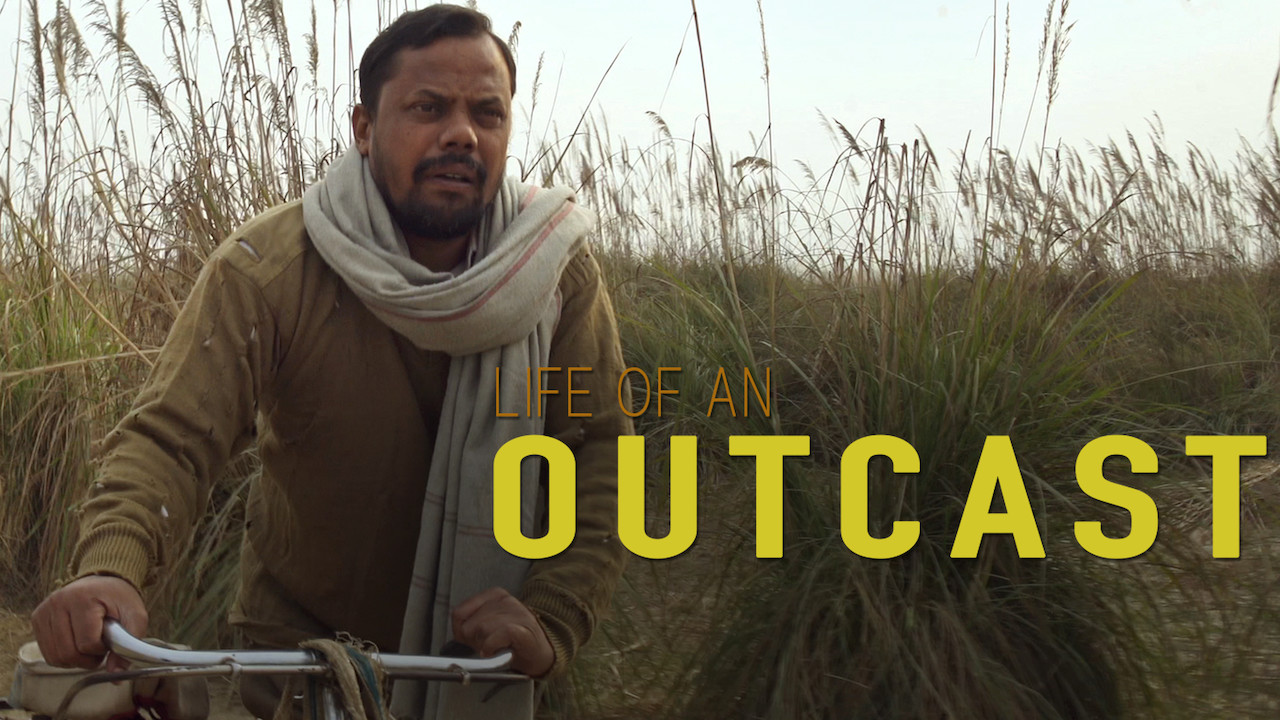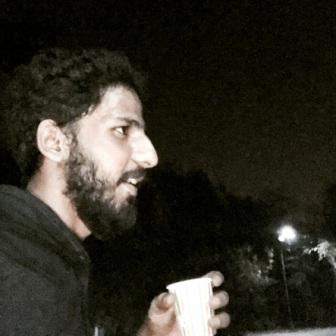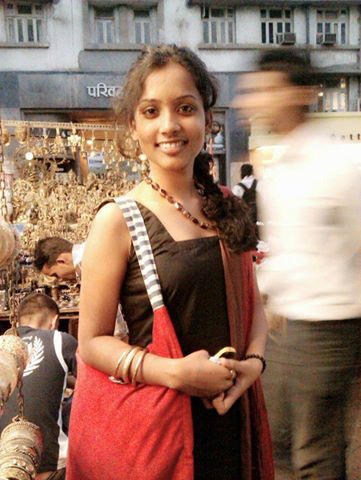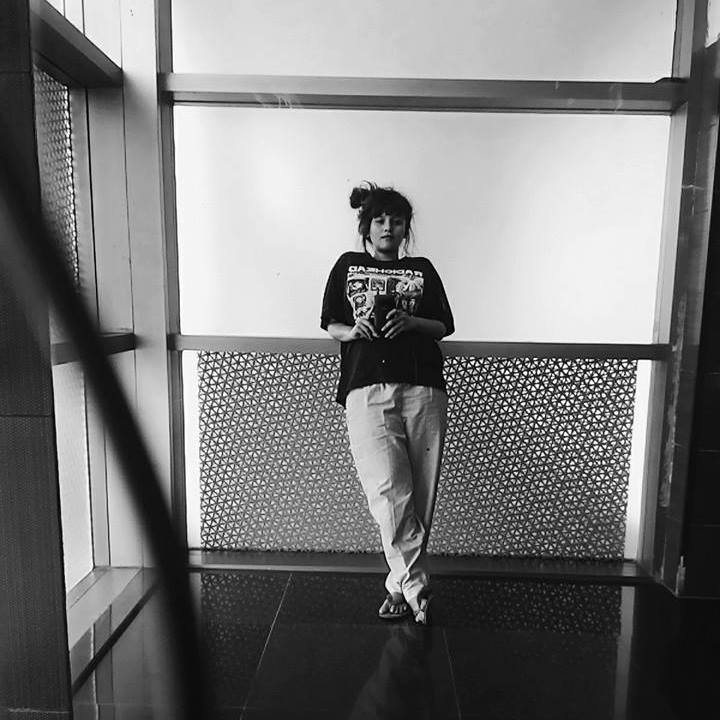Neeraj Bunkar
Cinema is the reflection of the society, which manifests the realities of the actual world. There are multiple methods of filmmaking. In the popular Hindi cinema, caste-based realities are often ignored. In the case where caste is being discussed, it is a high probability that Dalits will be shown as submissive and helpless. Though recent phenomenal changes have been noticed in the cinematic world where the existing stereotyping have been altered. Kaala is a great example of it, in which Pa. Ranjith director of the movie dares to show the perspective of Ambedkarism and has shown the symbols like Buddha Vihar clearly without any hesitation. The assertiveness and the Dalit characters in Kaala have broken the stereotyping image of popular Hindi cinema. This article will try to understand the different aspects/perspectives of film making and portraying of Dalit characters in movies, by studying the film ‘Life of An Outcast’ directed by Pawan K. Shrivastava which is a story of a Dalit family that left the village because of the caste-based atrocities they faced there and started living on the outskirts of the village. This is still very relevant even after the 74 years of independence. The characters in the movie are a true representation of the rural society in which the generational gap is also shown. A middle-aged Dalit man dreamed for his child becoming a teacher. The child who goes to school regularly and is very keen to learn English but in school, he hardly gets to sit in the classroom as his teacher forces him to clean toilets and school premises. Even after facing this much humiliation at school, he becomes a mathematics teacher. The upper-caste villagers unable to tolerate this, get him arrested in the name of hurting their religious sentiments. The protagonist struggles to earn a sum of money to get his son bailed out. In this process, the story revolves around the dangerous and ugly truth of caste society in India.

Dalit character: Assertive vs Vulnerable
It’s been a trend of depicting the Dalit character in a way where they are more in a position of being oppressed rather than vocal and confident. Dalit characters are often shown as powerless (Sujata and Sadgati), wretched (Paar and Bandit Queen), and dependent upon the morality of the social elites (Aarakshan and Lagaan) (Wankhede, 2019). Article 15 does not shy away from depicting the realities of caste society. For example, the brutal gang rape and murder of two Dalit girls does not shock the civil society. The victims’ parents are helpless against the insensitive local police. Expecting justice for the victim appears far-fetched under such conditions (Wankhede, 2019). So, the question that is often raised by the Dalit-Adivasi intellectuals is why Dalit-Adivasi character cannot be the protagonist or in a lead role? Even though this trend is changing but in a subtle way like Newton movie has a Dalit character who is in a lead role but his caste identity is hidden and not revealed by the director purposefully. It seems that he is aware of the caste debate but not want to go into it through his movie because if he does it the plot of the movie change entirely.
The movie ‘Life of an Outcast’ has varied characters that depict the reality of caste society. The story revolves around a Dalit man (Ravi Sah) who is struggling to get his son bailed from jail. He is uneducated, not aware of the legal procedure, and seeks help from the other person (Painter Babu) who knows few advocates. On the other hand, the son who is jailed and very much aware of Ambedkar and often talks about the constitution. He seems very confident, vocal about his rights, and has full faith in the constitution, unlike his father. However, his character is limited in set boundaries where he can speak, argue but the nature of resistance is very subtle to claim his legacy of the Ambedkarite movement. The character of the teacher in the movie is very assertive but in a gentle manner, who is well dressed and talks patiently with facts.

Director has tried to show all the problems that lie in the heart of rural India whether it is caste, gender, religion, and social norms. He tried to establish a new discourse of class hegemony over caste, which is more convincible/acceptable for most of the people in India. One dialogue of this movie emphasizes poverty rather than caste wherein a Dalit man saying to his son that,’ Gareeb ka Kono Jaat Nahi Hota hai’ (Poor people don’t have caste). The common argument that caste disappears when one becomes economically strong is not true, in reality, caste never leaves, it always follows us wherever one goes. The movie clearly shows that the adaptation of modernity is only meant for some. We can see the references of Ramcharitmanas written by Tulsidas, in one scene Painter babu and a Dalit man are talking about, ‘Dhol, Ganwar, Sudra, Pashu, Naari Sakal Tadana ke Adhikari’ which means Drums, the illiterate, lower caste, animals and women deserve a beating to straighten up and get the acts together. The Ramcharitmanas Path in the movie is constantly playing in the background, which shows how the village is attached to religion unconditionally. The movie tries to explore the difference between a temple and a school. Society (upper caste) wants religious space in every domain but the mathematics teacher is leaning towards a scientific approach. In a police station scene, the SHO says to the teacher, ‘you look quite masculine’, what would you achieve by not writing OM?’ it means that being rational is not considered as a man! His Dalit identity is more significant than his identity as a mathematics teacher. As the conversation moves forward, the SHO humiliates the teacher by saying, ‘Don’t you have manners? How dare you to sit in front of me? The government is paying you money for everything; still, you cannot look after yourself’. This brings a debate of reservation in the movie to highlight how the upper-caste thinks that reservation is a means of charity. In reply, the teacher says, ‘You can do whatever you wish, I have been facing all this since my childhood but remember one thing, this country does not run according to your whims, it runs according to the constitution’. Using the constitution in the movie is a powerful tool to answer all the irrationality, injustice, and fact-less arguments. The movie has shown the evil cultural practice related to marriage where the bride has to spend her first night with the landlord. But the bride refuses to go to the landlord’s home and says, ‘I am not anyone’s personal property’, her husband supports and resists against this practice with her, he said to the elder member of his family that, ‘I love her,’ in reply the relative said, ‘you should’ve remembered your caste before daring to love!’ The landlord’s wish is more important than your caste’. The picturization of upper-caste hegemony and the revolting nature of the newlywed bride and bridegroom in the movie through this scene compels us to think about such social-cultural evils of our society where women are seen as objects rather than human beings.
Fake News and the Society
Director uses Chaiwala (Tea seller) to highlight how fake news works and influences the mass of the country. His portraiture in the movie is like an AndhBhakt who never tired of praising Modi Ji. He talks about the steps taken by the PM as a surgical strike to teach Pakistan a lesson and Trump’s friendship with Modi Ji. Some of the channels in our country are very biased and promote right-wing ideology very effectively by spreading fake news. There is the popular term “godi media” that was coined for these channels by Ramon Magsaysay award winner journalist Ravish Kumar of NDTV. He inherently spoke of the lap of Prime Minister Narendra Modi’s government and its lapdogs (Husain, 2020). In rural India, the influence of fake news is very high, Why is it? Not because they are illiterate and not aware of the development that India has achieved so far in the technological field, it is because they are stacked in the religious sphere and can easily be fooled by the politicians through the WhatsApp University in the name of faith and god.
Decoding scenes and characters
The theme of the movie is ‘Rationality over Religion’. The author had a conversation with Director Pawan K. Shrivastava and Actor Ravi Sah that unravelled the implication of setting up the scenes and backdrop. When the author asked the director about the intention of making this film he replied, ‘I think the people (especially the age group of 18-30 years) who live in urban spaces like Delhi, Mumbai, Bangalore, Lucknow, and Jaipur think that caste does not exist, it was there in the 1950s and 60s but not today because I don’t believe. So, I always wanted to make a film on such an issue to make them understand that the caste system has not ended and it still exists in India’. He further added, ‘If you are of high caste then you will not be so aware of caste, because you always feel privilege, and the thing that you have is in power than you no need to aware of it, you already using that power, the caste system exists in the urban spaces too but the people from the upper caste are not suffering from it so, they never feel it’. He said, ‘if you open your eyes and start looking around you, you will find people who work in sewerage are totally from the Dalit community and priests of temples are hundred percent from the upper caste, isn’t it caste? It is a caste system but nobody wants to talk about it and in cities, upper-caste people have a caste system but in the bottom layer of their skin, therefore, they can’t feel it’.

In my film, I have shown that there is a cultural relation between OBC and upper-caste although there is a difference of hierarchy the relation of upper-caste and Dalits are not the same, when it comes to selling land it is mostly transferred from upper-caste to OBC’. The issue of land is shown in one scene of the movie where two brothers from the Thakur community were having a conversation, ‘if you dare to sell our land to a teacher from a lower caste, it will be very difficult for you. So even the land has caste attached to it’.
The author asked another question to the director, ‘Do you think that this movie is made through the insider perspective’?
He replied, ‘see it’s not my first-hand experience because I too belong from the upper-caste community, it is an observation and my awareness about the caste-system, my compassion, and research about the issue, even I have seen it from my childhood in the village, it’s my empathy and a pang of guilt that I’m privileged, all these things combined and came out as a result of the movie ‘Life of An Outcaste’. Director also shared about the underlined aspects of the movie that how he has shown 30 years and in this process how the form of oppression has changed and in recent time Dalit are being excluded from making political opinion like in movie not writing a word ‘OM’ by Dalit teacher is a political opinion but upper -caste people can’t digest it and trying to oppress Dalits through politically.
When the author asked about the character of the painter babu, the director said, ‘I haven’t shown the caste of him, but his association with left ideology can be seen clearly. In additionally the author asked further that, ‘why Dalit characters need a saviour from the upper caste? In my movie, the painter babu’s decision is not that effective for the Dalit character, he went to seek help from him because he thinks that he should take help from him because he is not progressive, unlike his jailed son not feel the same’. Further, he spoke about the movie, ‘when the director makes cinema he wants to convince his idea to the audience, character in my purposefully talks about the constitution because it is a convincing idea even upper caste people can understand it because my main purpose is to convince people that they have done injustice with Dalits’. When the author asked the director, ‘why there is a limitation even after showing Dalit mathematics teacher assertive and vocal? He replied, ‘he is not highly educated and not studied from JNU who protest and form a movement, he studied in a local college, don’t know about the student unions, he doesn’t have an organization or unity of people, he can’t fight in that premise, he can fight only within his capacity, I don’t want to make it heroic people will applause but it would seem very fake’.
When I asked him about the portrayal of labour chauraha, he said that ‘I wanted to show it in my movie where I can depict the condition of labours in the country, so I have done it’. The movie does not end with a defined answer. It ended with a question because the director wants to know from the people itself whether the jailed son should get bail or not!
While discussing with Actor Ravi Sah who was part of this movie as a protagonist, one thing has cleared that there is a stereotyping in portraying the Dalit realities in a certain manner. He talked about the movie, ‘The main objective of the ‘life of an outcast’ is to make people aware of the issue without trying to offer any kind of solution’. He further added that ‘caste is deep-rooted in our system. There is a dialogue in the movie which says that ‘you have left caste but caste has not left you; this is the core message of the entire film. Life of an Outcast is not even a movie or film. I would say, it is a cinema, which is a medium to interact with people and highlight the issue not commercially but as a genre. This movie has a realistic approach that depicts the realities not romanticizing it’. Generally, movies that are made on the issue of Dalits are not from their point of view but show it in a different manner that leaves the real issue behind’.
Conclusion
This movie can simply be defined as the ‘Cinema of Resistance’ in which the director dared to show the upper-caste hegemony and the assertion of Dalits. There is a contrast in the movie wherein one scene father is saying to his son that, ‘Poor people don’t have caste’. In another scene where an OBC constable is saying to the Dalit mathematics teacher that, ‘Today we both have jobs and money, everything has changed but not our castes, and that will never change’. For Dalit, his poverty is a serious issue of concern rather than his caste. But for OBC who is not that much affected by the caste in comparison to the Dalit have the concern of caste rather than poverty.
The jail scene depicts the reality of OBCs that how they became part of the upper caste conspiracy which made them powerless and a tool to fulfil upper caste agenda. If we look at the demography of Rajasthan, SCs constitute 12.2 % of the total population (Census, 2011) despite having this much population they are the most vulnerable and face atrocities and most of the atrocities with Dalits are done by people from the OBC community. The anger and hatred towards Dalits among OBC can be seen in the movie, in one scene OBC constable says, ‘people respect the picture of your Ambedkar but not his teachings’ through his characterization director wants to reveal the politics/agenda of the current government.
~
Husain, S. K. (2020, April 28). Why India’s ‘Godi Media’ Spreads Hatred and Fake News. Retrieved August 25, 2020, from https://clarionindia.net/why-indias-godi-media-spreads-hatred-and-fake-news
Wankhede, H. (2019, July 15). An upper-caste gaze. Retrieved August 25, 2020, from https://indianexpress.com/article/opinion/columns/an-upper-caste-gaze-article-15-dalits-bollywood5831109/
https://www.netflix.com/title/81051693?s=a&trkid=13747225&t=cp
http://www.rajcensus.gov.in/PCA_2011_FINAL_DATA/PCA_chapter_2.pdf
~~~

Neeraj Bunkar is a film enthusiast and currently working in Rajasthan as an activist among Dalits and adivasis and has previously done MA Social Work in Dalit and Tribal Studies and Action from TISS, Mumbai.










